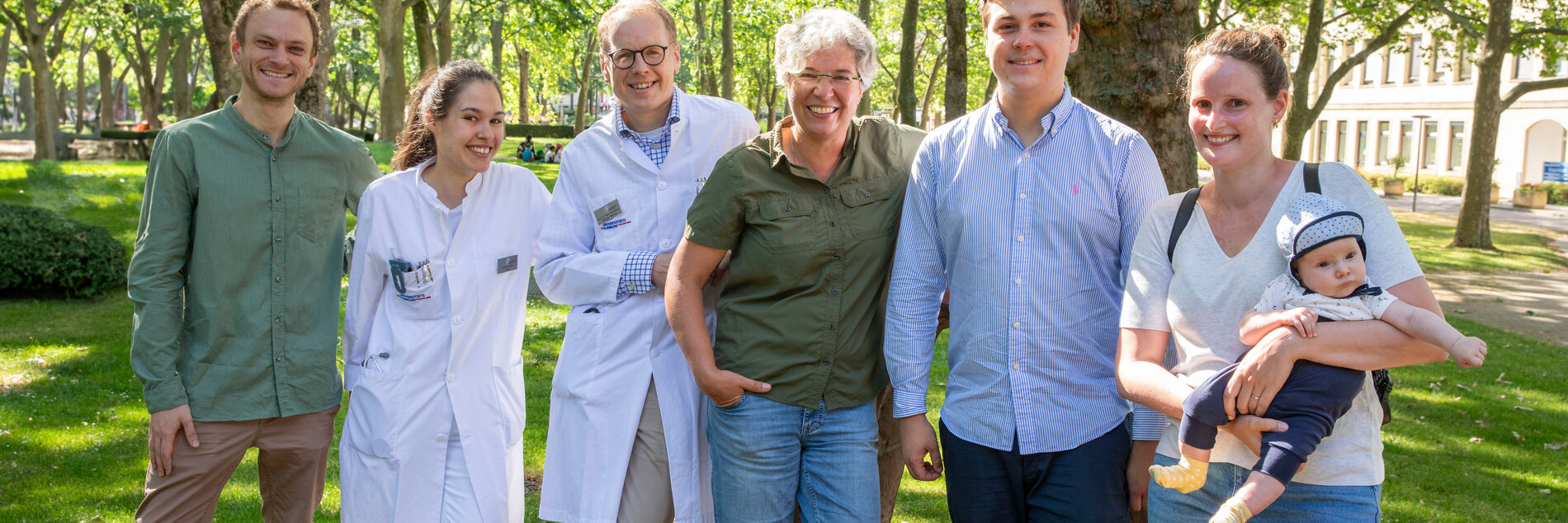Research interest
The concerted action of molecular signaling pathways activated in response to liver damage and inflammation determines the outcome of liver disease. Many lines of evidence suggest that the transcription factor c-Jun, a member of the AP-1 transcription factor, is an essential mediator of many of these hepatic stress responses. We are therefore aiming to dissect its functions in inflammatory liver disease and cancer by studying respective mouse models and patient material. We have previously shown that c-Jun expression indeed promotes hepatocyte survival in a variety of disease models including acute T-cell mediated hepatitis as well as during endoplasmic reticulum stress. Ongoing studies identified c-Jun as important molecular link between liver inflammation and cancer in a mouse model of hepatitis B virus-related tumorigenesis. In addition, we are dissecting the impact of c-Jun on the transition from non-alcoholic fatty liver disease to steatohepatitis in mice and patients.
Another focus of our research is on extracellular ATP signaling in the liver and intestine. ATP release to the extracellular compartment occurs in response to cell death and diverse stress stimuli and is increasingly recognized as important “danger signal” and mediator of subsequent inflammatory responses, which are mediated by binding of ATP to purinergic P2 receptors. We have shown that ATP is indeed released during acute hepatitis in mice. Mice lacking P2Y2R, which is the most abundant P2Y receptor isoform in the liver, are protected from hepatitis. This phenotype is due to synergistic but cell-type specific functions of P2Y2R expression, which mediates chemotaxis of neutrophils to the liver and promotes hepatocyte cell death. These findings suggest that inhibition of P2 receptor function may be a promising therapeutic approach for inflammatory liver disease. We are therefore further dissecting the functions of this receptor family during hepatitis and liver tumorigenesis.
Group of Peter Hasselblatt
PD Dr. Peter Hasselblatt (Group leader) | +49 (0) 761/270-34010 |
| |
Birgit Hockenjos (Techn.) | +49 (0) 761/270-35400 |
Pius Martin (MD student) |
|
Nadine Reuter (MD student) |
|
Felix Röttele (PhD student) | +49 (0) 761/270-33962 |
Jonah Szentandrasi (MD student) |
|
Frederike Thielen (MD student) | +49 (0) 761/270-35400 |
View all publications
Purinergic P2Y₂ receptors promote neutrophil infiltration and hepatocyte death in mice with acute liver injury. Ayata CK, Ganal SC, Hockenjos B, Willim K, Vieira RP, Grimm M, Robaye B, Boeynaems JM, Di Virgilio F, Pellegatti P, Diefenbach A, Idzko M, Hasselblatt P. (2012) Gastroenterology 143(6):1620-1629.
The transcription factor c-Jun protects against liver damage following activated β-Catenin signaling. Trierweiler C, Blum HE, Hasselblatt P. (2012) PLoS One 7(7):e40638.
The transcription factor c-Jun protects against sustained hepatic endoplasmic reticulum stress thereby promoting hepatocyte survival. Fuest M, Willim K, MacNelly S, Fellner N, Resch GP, Blum HE, Hasselblatt P. (2012) Hepatology. 55(2):408-18.
Impairment of hepatic growth hormone and glucocorticoid receptor signaling causes steatosis and hepatocellular carcinoma in mice. Mueller KM, Kornfeld JW, Friedbichler K, Blaas L, Egger G, Esterbauer H, Hasselblatt P, Schlederer M, Haindl S, Wagner KU, Engblom D, Haemmerle G, Kratky D, Sexl V, Kenner L, Kozlov AV, Terracciano L, Zechner R, Schuetz G, Casanova E, Pospisilik JA, Heim MH, Moriggl R. (2011) Hepatology. 54(4):1398-409.
The role of the transcription factor AP-1 in colitis-associated and beta-catenin-dependent intestinal tumorigenesis in mice. Hasselblatt P, Gresh L, Kudo H, Guinea-Viniegra J, Wagner EF. (2008) Oncogene 27(47):6102-9.
Development of pulmonary fibrosis through a pathway involving the transcription factor Fra-2/AP-1. Eferl R*, Hasselblatt P*, Rath M, Popper H, Zenz R, Komnenovic V, Idarraga MH, Kenner L, Wagner EF. (2008) Proc Natl Acad Sci U S A 105(30):10525-30. (*equal contribution)
Hepatocyte survival in acute hepatitis is due to c-Jun/AP-1-dependent expression of inducible nitric oxide synthase. Hasselblatt P, Rath M, Komnenovic V, Zatloukal K, Wagner EF. (2007) Proc Natl Acad Sci U S A 104(43):17105-10

We are part of the TRANSLATIONAL EXPERIMENTAL IMMUNOLOGY LAB
Prof. Dr. Maike Hofmann
Head of the Translational Experimental Immunology Section
Head of Research MED II
+49 (0) 761 270-35091
Prof. Dr. Dr. Bertram Bengsch
Head of the Translational Systems Immunology Section in Hepatogastroenterology
+49 (0) 761 270-32870

